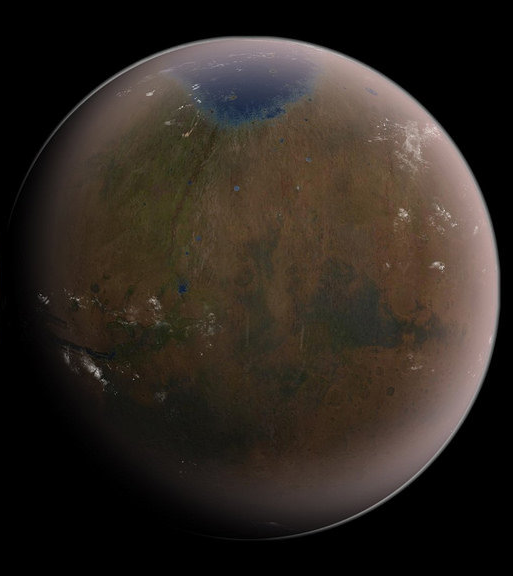
 The color (r, g, b),transparency (a) and the height (distance) of layers of atmospheric fog. cloudVelocity: How fast the clouds move around the planet, in meters per second.
The color (r, g, b),transparency (a) and the height (distance) of layers of atmospheric fog. cloudVelocity: How fast the clouds move around the planet, in meters per second. 
Raise the number to make very translucent clouds.
alpha: How transparent the clouds are. height: When the clouds stop or how thick the clouds are. startHeight: The altitude in which the clouds start. cloudTexture: The texture used for rendering the clouds. gradientHeight: How tall the atmosphere texture is in meters. gradientTexture: The texture used for rendering the atmosphere. upperAtmosphere: How high the upper atmosphere is. 
Users will have to play with the number and judge for themselves how thick they want the atmosphere when constructing planets.
Higher "curve" numbers result in the atmosphere fading much slower. such as "curve": 0.01 will provide nearly the same density in space. Lower "curve" numbers result for the atmosphere fading faster. Curve: how fast or slow the atmosphere thins. Multiply this to deploy a parachute in higher altitudes, but it will cause only less drag when deployed higher. parachuteMultiplier: How high parachutes can be used in the atmosphere. 0.005 (1/200) is equal to 1 bar of pressure Density: atmospheric pressure at surface level. Height: how high the atmosphere goes, in meters. To convert the decimal numbers to rgb(r, g, b), multiply by 255. map color: the color you see in map view. timewarpHeight: the minimum height you can time warp, in meters. Gravity: acceleration due to gravity in meters/second squared (m/s²) (on the planet's surface). Radius is the measure between the planet's surface and center Radius: The radius of the planet in meters. 
This part explains what each line of a file does.












